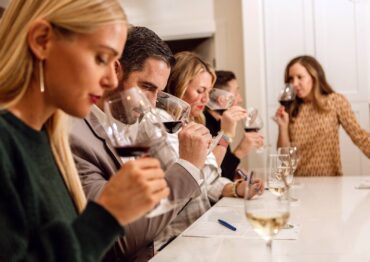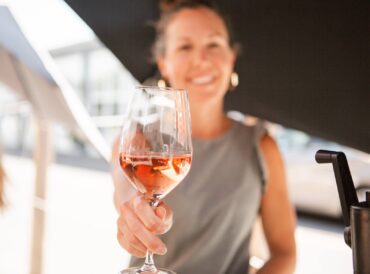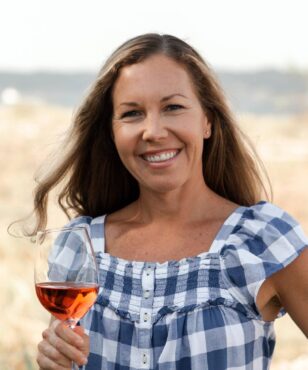
With so many bottles crowding the shelves of your favorite wine shop or grocery store, it’s hard to know what wines you might like, especially when the label doesn’t even tell you the kind of grape is in the bottle. With a simple understanding of wine regions and knowing where different grapes grow best, you’ll be able to confidently grab a bottle of Burgundy and know just what you can expect in the glass.
Like fruit and veggies, some grapes just grow best in certain areas. Temperature, annual rainfall and humidity are a few contributing factors that determine where grapes thrive. Understanding that apples grow great in Wenatchee but not so well in Puerto Rico can give you insight as to why a pinot noir might grow well in the Willamette Valley, Oregon, but not so well in the Napa Valley, California. Great grapes come from their ideal growing climates. And, great grapes make great wine.
Cooler-climate growing regions have more cloud cover and lower annual temperatures and are farther away from the equator. Microclimates aside, examples of cooler wine-growing regions are Germany, Chablis, Willamette Valley and the Puget Sound. You can expect thin-skinned grapes with low sugar content and often lower alcohol from these areas.
Grapes grown in cooler climates have thinner skins, enabling them to ripen even without strong sunlight and despite the cooler temperatures. They can’t do this with thicker skins. Tannins are derived from the grape skins, stems and seeds. When grapes have thinner skins, they have less potential for tannins and also less color coming from the skins.

Cool-climate wines result in lighter colors and less tannins in the glass. Grapes like chardonnay, riesling, pinot noir, nebbiolo and gamay come from these cooler climates. If you’re in Kitsap County, you’re residing in the Puget Sound AVA (American Viticultural Area), which is also a cool-climate grape growing region. Vineyards here grow thin-skinned wines with lower sugar, lower alcohol and solid acidity.
Warmer climates are closer to the equator and experience higher annual temperatures, where the sun is stronger and blue skies are the norm. Think Tuscany, Napa and Southern France. Most grapes grown in warmer climates are red and have a higher sugar content. The sun can be very intense in warm climates and the grapes in these climates have thick skins, which can sometimes appear black and also provide protection from the sun. It’s pretty hard to make wine from raisins!
A few grapes that thrive in these climates are cabernet sauvignon, grenache, sangiovese, syrah, tempranillo, zinfandel and viognier. These wines have more body and power, especially when you think of them compared to the elegance, lighter body and delicacy of the cooler-climate wines. To understand this concept, think about a cool-climate sauvignon blanc compared to a warm-climate viognier. Very different body, mouthfeel and tasting experience.
Eastern Washington is home to most of the vineyards in our state. The Olympic and Cascade Mountain ranges run north to south and combine to stop the clouds rolling in off the Pacific Ocean, known as a rain shadow effect. There are only 7 to 12 inches of rainfall in Eastern Washington during the growing season, compared to 35-38 inches in Western Washington. The Yakima Valley in Eastern Washington sees over 300 days of sunshine and produces some big, bold cabernet sauvignon, syrah and merlot.
Some wines don’t include the grape on the label. By better understanding which wines grow in which regions, you’ll have an easier time deciding on a bottle you’ll like.

Chablis, France, is in Burgundy’s most northerly wine-growing region. If you see Chablis on a bottle, it’s chardonnay. Same goes for white Burgundy — also chardonnay. Champagne is also a region in France and because it’s a cool climate, you can be confident that cool-climate grapes such as chardonnay, pinot noir and pinot meunier are what’s included in a true bottle of Champagne. Side note: A wine can only be called Champagne if it’s produced in the Champagne region.
Here are some of the same grapes that you may recognize by the name and region where they are sourced:
- Sangiovese — Chianti
- Pinot noir — Burgundy
- Grenache — Garnacha
- Tempranillo — Rioja
- Syrah — Shiraz
- Sauvignon blanc — Sancerre, Pouilly-Fumé and fumé blanc
- Chardonnay — Chablis
I hope the next time you’re looking for an easy drinking red wine to pair with pizza, you can confidently grab a bottle of Chianti and know you’re drinking sangiovese. Cheers!





























